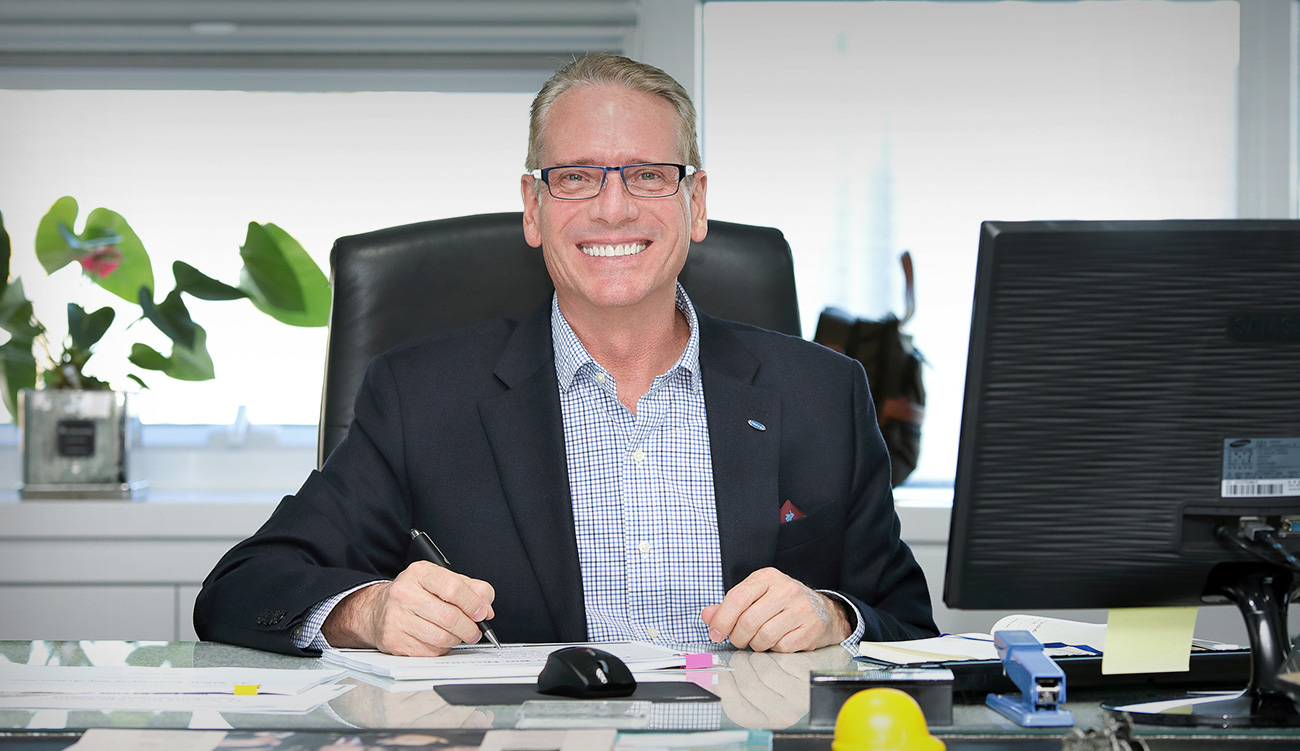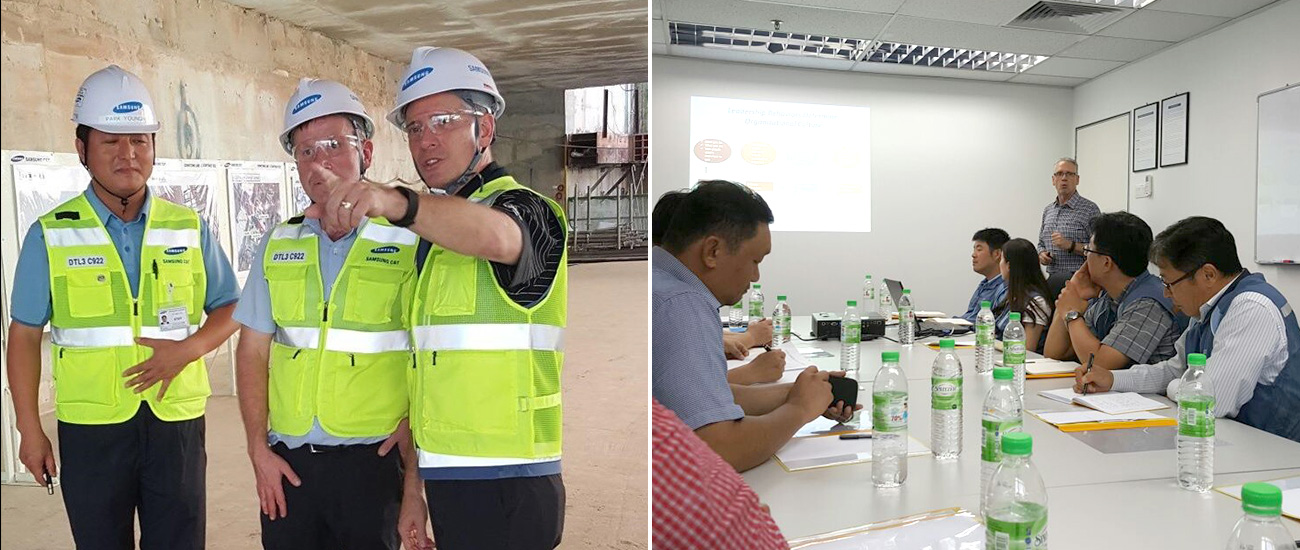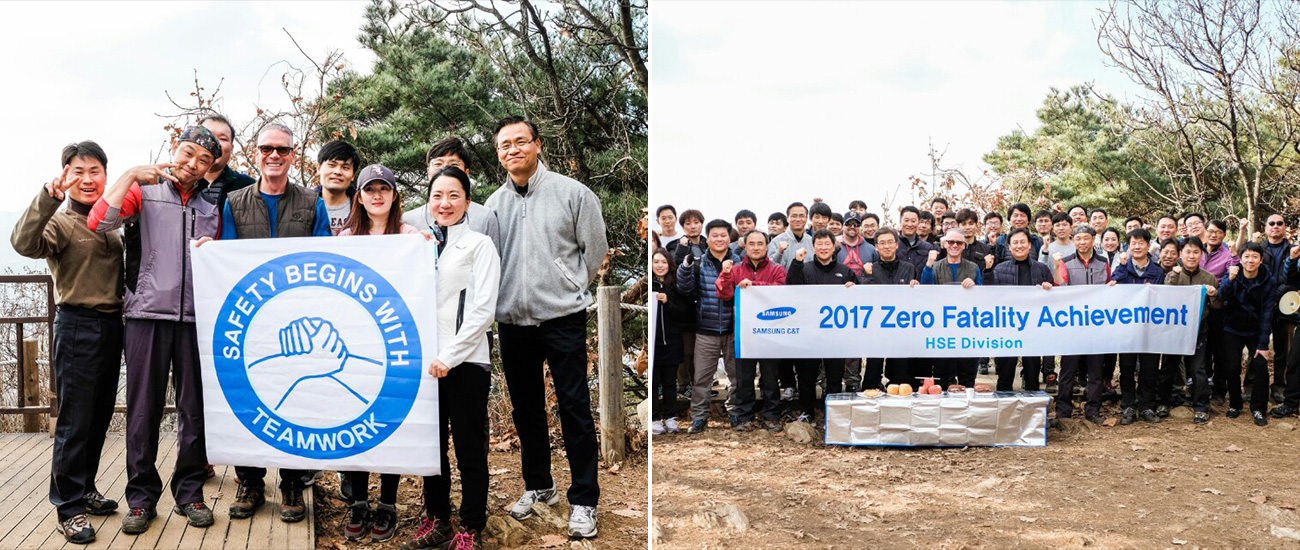In the internet age, information flows to just about everyone, meaning that the public is now highly aware of every action big companies take. The world is evolving fast, and people everywhere are now well-versed in matters as diverse as human rights and safety.
This extends to most industries, and construction is no exception. Consumers no longer just hope that contractors will provide safe on-site working conditions – they are coming to expect increasingly high safety standards.
Contractors like Samsung C&T are aware of the importance of safety in every aspect of their work – and are responding to the challenges of the modern world with a comprehensive range of safety measures.
Higher Standards
Brian Spraker is a senior vice president at Samsung C&T’s Engineering and Construction Group, and the head of the company’s Health, Safety and Environment (HSE) Team. He has been working in HSE for some 27 years and has seen the field grow increasingly important, particularly in recent years. Brian says contractors are now aware of the escalating pressure they are under to improve safety standards.
He explains, “We are looking at a future where clients are actively looking at a company’s global safety performance and awarding contracts based on that performance. Without high safety performance, companies will find themselves unable to compete at a global level.”
But how do multinational construction companies that work on projects around the globe go about consistently setting – and maintaining – high safety standards? Brian explains that, for a start, all members of the company must understand that good safety is ethically the right thing to do and that it also makes good business sense. Once they understand these principles, the next step is for everyone to accept their role in developing and maintaining world-class safety culture. No one department or person can do it alone.
“All employees, regardless of designation, must understand they have a vital role to play in developing our safety culture,” he notes. “Safety needs to be integrated into everything we do. No matter what job you’re doing, there is always a safety aspect. From the most junior to the most senior person in an organization, everyone has a role to play when it comes to building a strong safety culture.”
Leadership’s Role
Talking about involving everyone in building a company-wide safety culture is encouraging, but it is only the first step. Brian says that senior managers and supervisors need to step up to the plate and ensure this happens.
That is why, in addition to its Safety Academies, Samsung C&T has developed a leadership training program. This program saw Brian travel to 20 project sites around the world in 2016 year, to run workshops in partnership with the regional HSE managers in Singapore and Dubai. Safety leadership workshops are delivered to senior and mid-level project staff. The workshops teach Project Leaders what they need to know to drive safety to a world-class level.
Samsung C&T plans to expand the leadership training program to its Korean sites. In addition, it plans to establish a corporate training system, with a wide array of modules that will promote consistent understanding and application of their HSE management system across projects around the world.
The vision is that this move will help develop highly skilled supervisors. Armed with this knowledge, Samsung C&T managers will be able to ensure subcontractor managers, workers and even suppliers are on the same page when it comes to safety.
“When assigning and overseeing work, supervisors should always ask themselves: ‘Is this task safe enough that I would feel comfortable with my own son or daughter doing it?” says Brian. “If we treat people as family members, we’ll instinctively – in an automatic manner – do everything required to protect them, without a second thought to cost or schedule.”
Raising the Bar
Brian highlights that a leader’s safety-conscious approach to executing work can have a powerful and meaningful impact on overall project performance. Ninety percent of good safety, he notes, is good planning. And, he says, in the EPC world, good planning leads to success in every aspect of a project – not just safety.
He explains, “I once worked on a project in Bangladesh where they recorded zero accidents for three years straight. The Project Manager was the most passionate person I’d ever seen with regards to safety. He took the time to teach, nurture and share his experiences with workers. People realized that he truly cared and wanted to protect them. Empowering people and making them feel appreciated encourages them to get more actively involved in safety.”
Creating a value-based safety culture is a process that begins at the top of any organization – and that is why leadership’s role is so crucial.
Brian explains, “As leaders, it’s critical that we understand how our visible actions determine the culture of the company we work in. What leaders spend time and effort on tells people what’s important to them. If people see that safety is important to their leaders, they will also strive to spend their time and energy on improving it. Leaders must always be aware that the culture of a company is a direct byproduct of their behavior and passion. The culture of a company can be defined in simple terms: ‘it’s how things get done around here.’”












